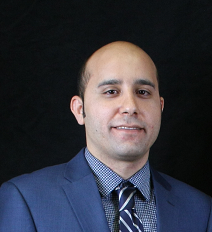Voiland School of Chemical Engineering and Bioengineering Graduate Seminar Series

About the event
The Gene and Linda Voiland School of Chemical Engineering and Bioengineering is hosting a seminar presented by Mehrdad Javidi, Ph.D. Candidate, Voiland School of Chemical Engineering and Bioengineering, Washington State University.
Mehrdad Javidi earned his Bachelor’s Degree in Mechanical Engineering (Solid mechanics) and Master’s Degree in Bioengineering (Biomechanics) from his home country, Iran. During his Master’s Degree, he worked on several different projects, including: heat transfer in biological systems during magnetic fluid hyperthermia therapy, the effects of backpack carrying on human gait and the spine, and modeling the interaction between blood flow and vessel wall in the cardiovascular system. Combining life sciences and engineering to achieve the ultimate goal of helping people motivated him to continue in bioengineering field. He began the Engineering Science (Bioengineering) doctorate program at Washington State University in Fall semester 2015. His research focus is studying the mechanisms involved with bipedal hopping in kangaroo rats. The applications for his research include design of leg prostheses and mobile robots.
How musculoskeletal properties influence vertical jumping performance by Kangaroo rats
The Kangaroo rat (dypodomys deserti) is a bipedal hopping rodent that has the ability to vertically jump as high as ten times its standing hip height. This ability is essential to avoid its predators. Although the biomechanical structures of bipedal hoppers are mostly similar, kangaroo rats (k-rats) exhibit better jumping performance than many other bipedal hoppers. The contractile properties of muscles, tendon properties, and musculoskeletal geometry have been shown to affect jumping performance in both human and animal. K-rats may use an optimal combination of these properties to enable their highly impressive jumping performance. However, the mechanisms of the high jumps by k-rats have not been well studied. His research aims are to experimentally measure the in situ contractile properties of the k-rat hindlimb muscles and the mechanical properties of their tendons. These results will then be integrated into computer modeling studies using forward dynamic simulations to predict maximum achievable jump heights and determine the sensitivity of maximal jump height to musculoskeletal properties.